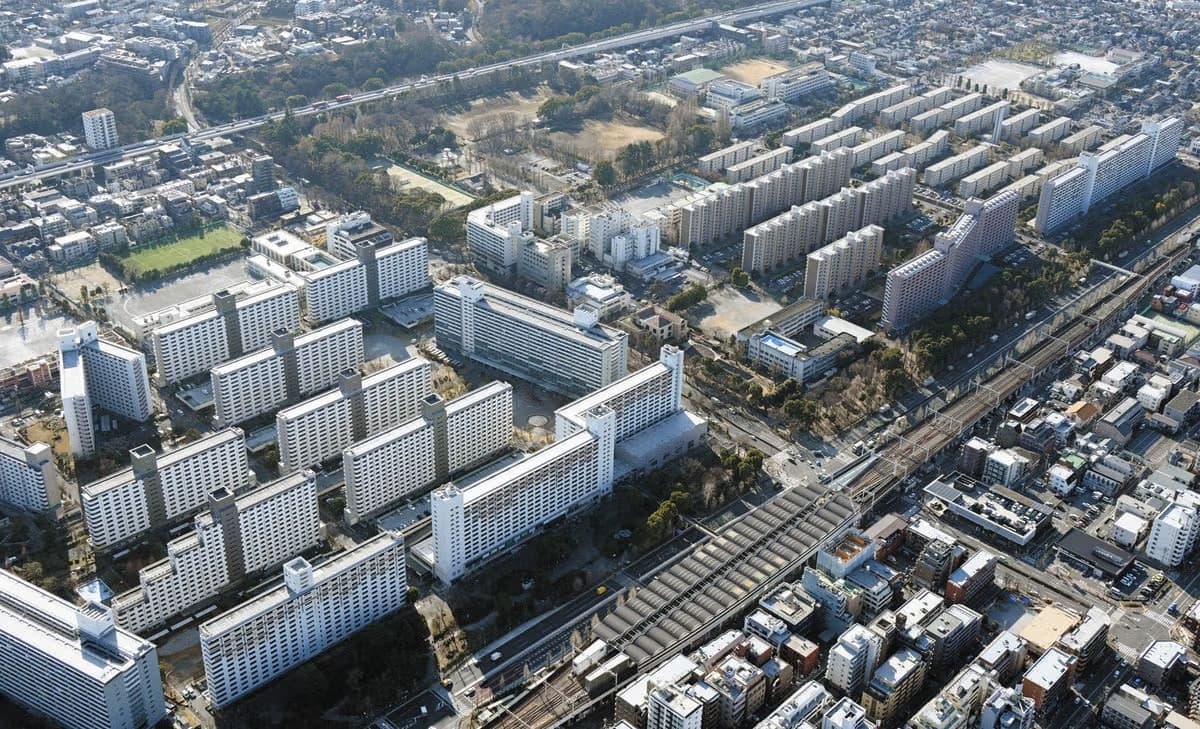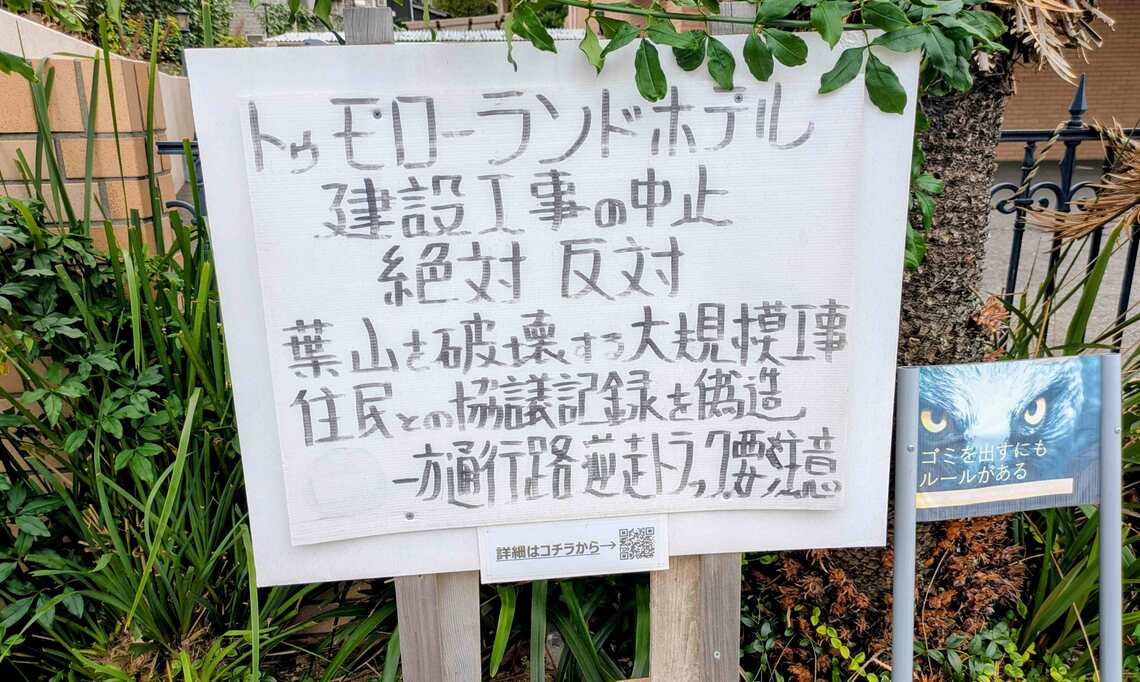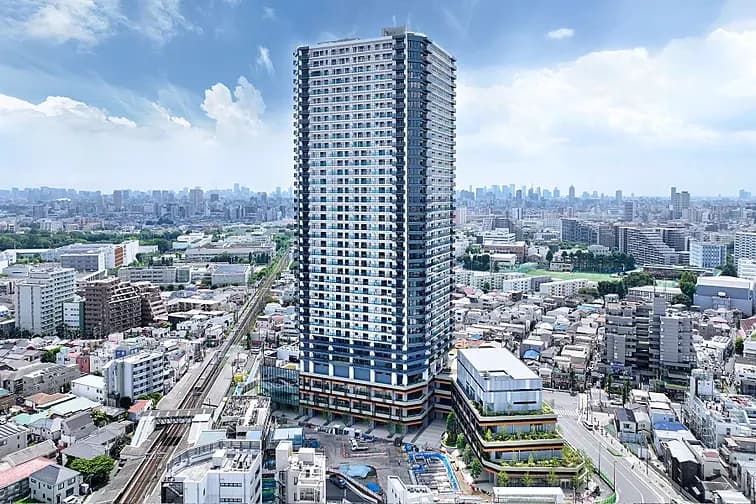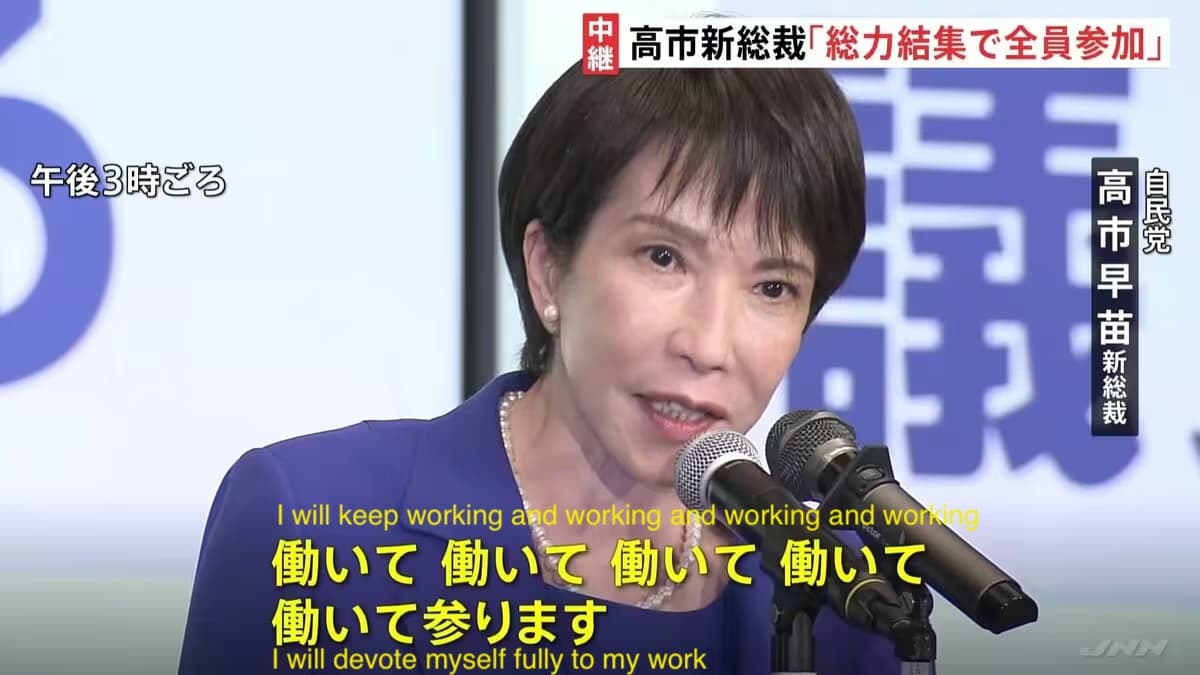Words: 3011 | Estimated Reading Time: 16 minutes | Views: 2251
Redevelopment is not wrong, but we must not leave behind “the forgotten.”
The redevelopment plan for Itabashi’s Takashimadaira, particularly the proposed new tower residences around the former Seventh Elementary School site, has generated strong unease and opposition among local residents—especially the elderly.
Redeveloping Japan’s Largest ‘Mammoth’ Housing Estate
Takashimadaira housing estate was built in the 1970s as the so-called “Japan’s largest mammoth estate,” comprising 64 buildings and over 10,000 units and once housing more than 30,000 residents. Fifty years on, the area faces severe building aging, a sharp population decline (current population about 60% of its peak), and an aging rate of 42%. To address low birthrates, aging demographics and outdated facilities, Itabashi Ward and the Urban Renaissance Agency (UR) are jointly advancing a historic redevelopment plan.
Plan overview
Under Itabashi Ward’s March 2024 "Takashimadaira Area Exchange Core Formation Urban Development Plan," the redevelopment defines multiple functional zones near Takashimadaira Station. "Reorganization Area 1" is located on the former site of Takashimadaira Seventh Elementary School and adjacent public land (approximately 1 hectare in total).
The ward has relaxed the height limit here from 45 meters to 110 meters, planning an approximately 110-meter high residential tower. The tower will utilize the former school land and consolidate adjacent Takashimadaira 2-chome Block 33 (currently seven UR rental buildings totaling 1,955 units) for integrated reconstruction. UR indicates that the new tower and other housing in the same area are expected to approach the original total of 1,995 units to accommodate almost all existing residents. This implies that the future development may include more than a single tower—subsequent "Reorganization Area 2" (height cap 45 m) and the "Tree-lined Promenade Area" are also planned to be developed gradually with housing and public spaces.
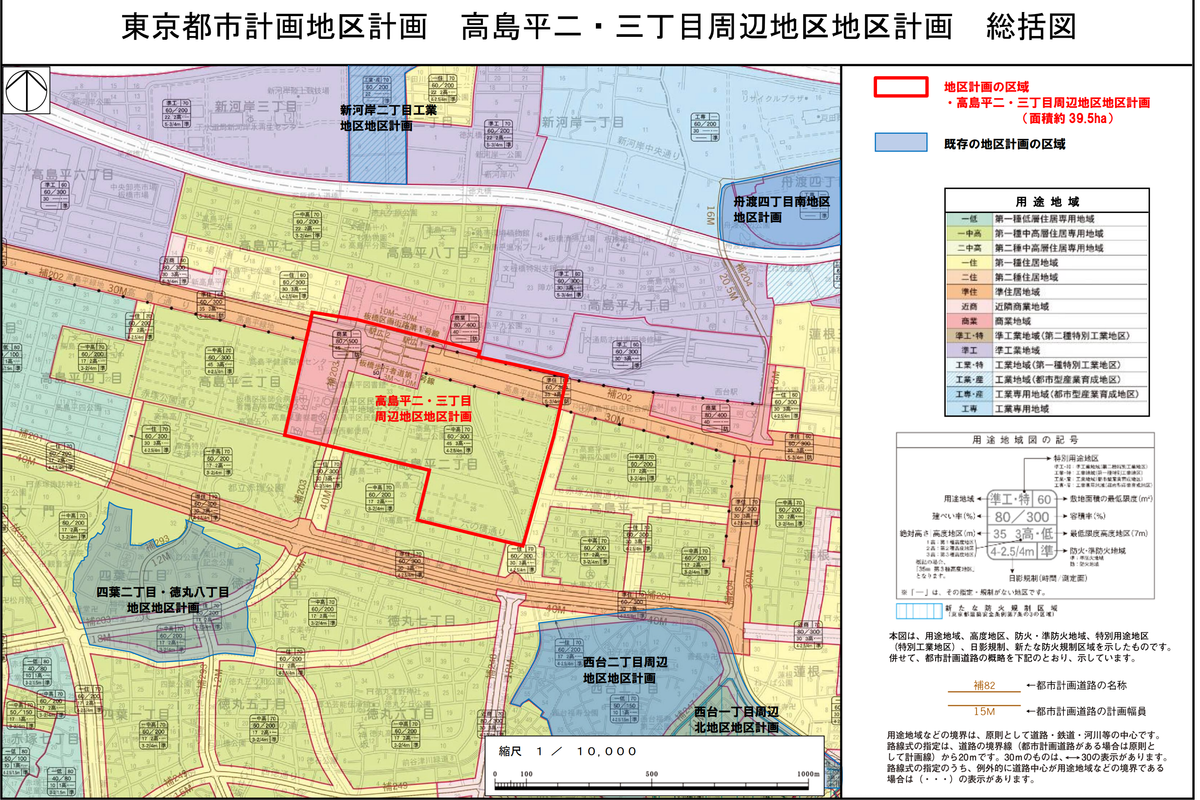
In addition to residential towers, the plan includes upgraded local amenities. Around Takashimadaira Station a public plaza will be created and retail and community service facilities introduced to improve convenience and reshape the area’s image. Part of the former school playground will be temporarily used as a "provisional plaza" for community events and urban regeneration pilots as a precursor to full renewal. The plan also adjusts road connections: two ward roads are proposed to be extended to connect with Takashima-dori to facilitate access to the tower’s underground parking and relieve current congestion. These road changes aim to balance the pedestrian environment; the ward says it will avoid destroying green spaces where possible and adopt a "pedestrian-first plus essential vehicle routes" approach to ensure safety and quality of life.

Development timetable
Preparatory work for the redevelopment officially began in 2025. In March 2025 Itabashi Ward and UR signed a land-exchange agreement, transferring ward-owned sites including the former Seventh Elementary School to UR for tower construction and publishing a draft reorganization plan. According to the ward, design for demolition of the old school will be completed within fiscal 2025, and actual demolition is scheduled to start in fiscal 2026. After demolition, UR will commence construction of the tower and other new buildings in Reorganization Area 1. Due to the project’s scale, specific construction start and completion dates for the tower have not yet been finalized.
2025 (preparatory stage): demolition of the Seventh Elementary School and the health and welfare center and refurbishment of municipal infrastructure such as overhead passages and plazas;
Phase 1 (next several years): construct an approximately 110-meter tower on the former school site (roughly seven buildings totalling about 1,955 units) while building pedestrian corridors and public green spaces;
Phase 2: comprehensive development around the station to integrate the tower with station-side retail and amenities and improve transport convenience;
2027–2035: a long-term cycle of phased demolition and reconstruction as redevelopment expands into other parts of the Takashimadaira estate;
Around 2030: the tower is expected to be completed and occupied; between 2031–2035 parts of the estate will be demolished and rebuilt.
As of mid-2025 the plan has passed expert review and is expected to be formally approved as an urban plan change in June 2025. Itabashi Ward and UR have engaged major developers (Mitsui Fudosan signed on in October 2024) to jointly advance the project. Overall, Takashimadaira’s redevelopment is in the stage of plan refinement and construction preparation. Once construction starts, this two-decade urban rebirth will begin—presenting investors with a long-term and large-scale transformation story.
Resident response: hopes and concerns
Large-scale urban renewal brings opportunities but also community anxiety. Many Takashimadaira residents are long-term elderly and working-class households. Since the redevelopment announcement, local residents have voiced a range of concerns and demands.
#1 Rent increases and relocation pressure
Current UR rental units in the estate are relatively inexpensive, and many low-income and elderly residents fear they will not be able to afford rents in the rebuilt towers. UR has stated that post-reconstruction rent support would be capped at a monthly subsidy of 35,000 yen, which may not guarantee parity with previous rents. In other words, if new tower rents rise substantially, amounts above 35,000 yen per month would be borne by residents. UR has not ruled out significant rent increases, prompting fears among residents that redevelopment could amount to a de facto forced displacement: elderly residents on fixed incomes could be priced out of the community. Resident representatives warn that this would effectively push low-income people out and are calling on the ward and UR to implement stronger rent-protection measures.

#2 Community cohesion and relocation transparency
Residents generally want clear guidance on relocation and rehousing. Questions remain about when to move, where to relocate, and what compensation will be provided. In April 2025, neighborhood associations in Takashimadaira 2 and 3-chome collected 3,538 signatures opposing the plan and submitted them to Itabashi Ward Office. Neighborhood association chair Miyazaka Yukimasa said: “Urban redevelopment must be resident-centered and ensure everyone’s security and peace of mind.” Residents demand detailed explanations of relocation schedules and compensation policies, fearing that poor rehousing arrangements will dismantle long-standing neighborhood networks and deprive elderly residents of familiar support systems.
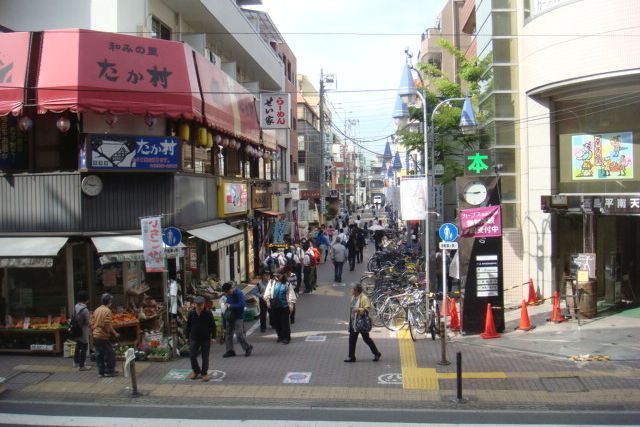
#3 Building and environmental impacts
Many residents initially questioned the proposed 110-meter tower. Itabashi relaxed height limits to allow taller buildings, but concerns remain about visual impact and loss of sunlight. Some residents argue that Takashimadaira’s open skyline and rows of mid-rise buildings form a distinctive character that would be harmed by a high-rise ‘‘skyscraper.’’ The tower’s potential to generate strong building winds is another worry for nearby households. Moreover, the new road scheme would cut through existing green belts, and residents fear the tree-lined promenade will be divided by vehicle traffic—reducing safety and tranquility. Extending a ward road to connect with Takashima-dori is expected to cause a substantial increase in vehicular traffic; some residents say this could threaten community safety.
In response, Itabashi Ward acknowledges the opposition but stresses that the estate’s deterioration means “this is a time when change is unavoidable.” The ward pledges to build a sustainable city for the next 50–100 years and to continue listening to residents. Local opposition parties such as the Japanese Communist Party have also engaged, repeatedly asking UR and the government to fully explain the plan and involve residents in decision-making.
Overall, Takashimadaira’s redevelopment has triggered classic "NIMBY" dynamics: residents want better living conditions but fear that their rights will be compromised. Rent and relocation arrangements are the most sensitive issues and will determine whether incumbent residents can share in the benefits of renewal. The ward and UR must balance commercial interests with social protections. This tension and negotiation also present an informational window for outside investors: community backlash could affect project timing and regulatory responses, so investment decisions should fully account for these social factors and potential delays.
Lessons from elsewhere: Jujo redevelopment in Tokyo
To better assess Takashimadaira, it is useful to reference similar Tokyo redevelopments. The redevelopment near Jujo Station (Kita Ward), not far from Takashimadaira, is a representative case—from early public opposition to a completed tower that sold out—which offers instructive lessons.
The Jujo West Exit area began its first major urban redevelopment project around 2017, planning a mixed-use tower of about 39 floors and approximately 135 meters tall—the later "The Tower Jujo." The project gathered major firms such as Tokyu Land Corporation and Nippon Steel Kowa Real Estate, delivering 578 new residences (184 units retained for original rights holders). Floors 1–4 house a retail complex "JESCO (J-ET Mall)" and public facilities; floors 5–39 are residential. Notably, the tower included the highest-priced apartment ever recorded in Kita Ward—the top-floor luxury unit listed at 300 million yen, setting a local record.
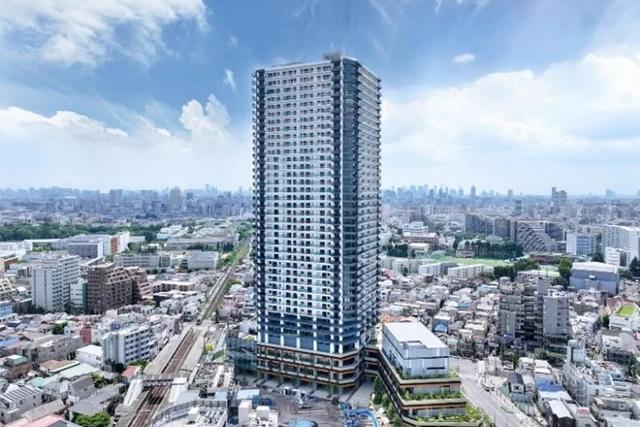
Resident opposition and negotiation
The Jujo project initially faced strong resistance from residents and landowners. Many old shops and households in the redevelopment zone displayed "opposition" signs. In August 2017, over 100 residents petitioned against forming the redevelopment association. Opponents feared that high-rise construction would hollow out old shopping streets, drive up rents and land prices, and split the community. Legal challenges even followed—some landowners sued the Tokyo Metropolitan Government seeking to invalidate the redevelopment association’s approval. Nevertheless, through multiple rounds of negotiation and government-led compensation incentives, opposition gradually subsided. Courts dismissed objections (with a high-court rejection of appeals in 2024). Construction began in 2021 and was completed in 2024.
Development outcomes
Today The Tower Jujo is a new landmark for the area. Its early 2023 sales were extremely strong: in the initial release of 128 units priced in batches, the average price was about 120 million yen, and 110 units sold out quickly. Sales registration statistics were striking—8,120 registrants and a peak oversubscription of 33x. In other words, dozens of buyers competed for each unit. The tower’s one-minute walk to the station, large mall and public facilities attracted diverse buyers: roughly 30% local to Kita Ward, about 10% from nearby Itabashi, and the rest from across Tokyo’s 23 wards. Buyers were mainly dual-income couples in their 40s–50s, active seniors, and families with children who valued direct connections to hubs like Ikebukuro, Shinjuku and Shibuya, as well as high-rise views and modern amenities.
The Jujo redevelopment materially increased local property values and investor returns. Real-estate data show second-hand condominium prices around Jujo rose about 30% over ten years. Used-property prices accelerated between 2016–2021, and rose nearly 50% in the most recent three years, leading suburban Tokyo gains. Land prices also climbed: Jujo’s land value rose from about 365,000 yen/㎡ in 2014 to 566,000 yen/㎡ in 2024—an approximate 55% increase over ten years.
The Tower Jujo’s new-unit prices rose sharply as well. From the first release in 2022 to the final sales in 2024, the average per-tsubo price increased from about 4.5 million yen to 6.4 million yen (roughly 2 million yen/㎡). For example, a 68.96㎡ three-bedroom unit priced at 100 million yen in 2022 (tsubo price ~4.85M) sold for 132 million yen in 2024 (tsubo price ~6.32M). Even high-floor ~66㎡ units were marketed close to 100 million yen. Early buyers realized substantial paper gains. If rented, a furnished two-bedroom in the Jujo tower commands about 250,000 yen/month, implying only a ~3–4% rental yield, but capital appreciation made the investment attractive to buyers.
Pain followed by long-term gain
The Jujo case shows that large redevelopment often brings short-term pain but long-term gains. Early resident concerns were not unfounded—some old shops and original residents did leave, and retail leasing at the tower’s base underperformed initially (a period of high vacancy led media to call it a "station-front ghost town").

However, from a macro perspective Jujo’s prosperity and real-estate values rose significantly, and an old downtown has been transforming into an area that blends traditional community character with modern urban functionality. Capital gains were substantial: both early developers and purchasers benefited from rapid appreciation. Yet investment risk remains: if prices are driven too high (some Tower Jujo units now rival central-Tokyo per-square-meter prices), future price growth is less certain.
Investment potential of Takashimadaira
Considering the above, Takashimadaira’s redevelopment presents investors with a complex but attractive outlook. Below is a multi-angle analysis of the area’s investment potential.
#1 Land and property price trends
Takashimadaira’s property prices have risen moderately in recent years. According to real-estate data, the average price for second-hand condos near Takashimadaira Station is about 3.29M yen/tsubo (≈1.09M yen/㎡). Prices have increased around 25.8% over the past ten years—less than central Tokyo’s frequent 50% gains but a clear appreciation. Under a neutral 10-year projection, Takashimadaira prices could rise another ~13.9%; under an optimistic scenario tied to successful redevelopment, gains could reach as high as ~47%. Compared with surrounding areas’ forecasted average gain of only 3.7%, Takashimadaira shows notable catch-up potential. In short, current prices remain relatively depressed and the land-value upside could be unlocked by successful renewal.
Urbalytics listings show that land asking prices around Takashimadaira rose nearly 50% over three years, reflecting investor enthusiasm following confirmation of major redevelopment.
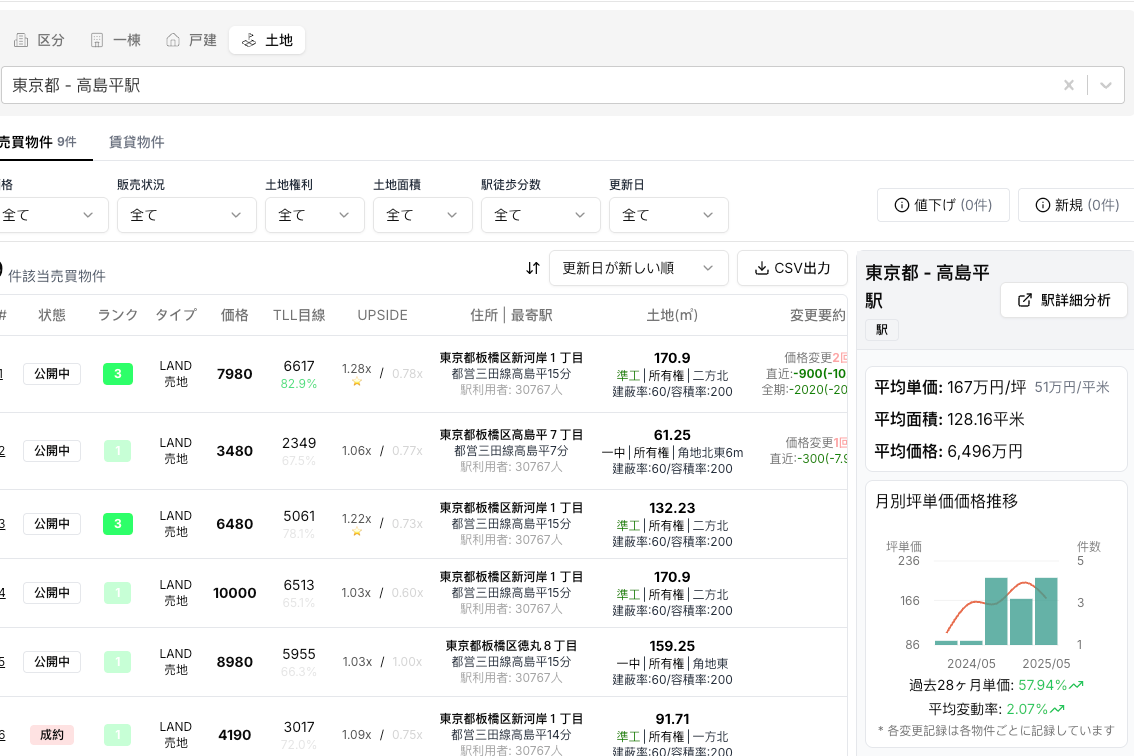
#2 Rental yields
Takashimadaira’s rental yields are relatively high for Tokyo. UR rentals currently range from about 58,000 to 119,000 yen/month for 1DK–3DK units. Using a second-hand condo average price of roughly 30M yen, typical rental yields are around 4–5%, slightly above central-Tokyo levels of about 3%. For small units, gross yields can be particularly attractive. Market examples include a small unit in "Third Takashimadaira My Co-op" selling for 12M yen with annual rent of about 1.27M yen—a gross yield of 10.6%—and a studio in "Top Takashimadaira" priced at 6.1M yen with annual rent of 576k yen—a yield near 9.5%. Because prices are low, small-unit buy-to-let investments can realistically achieve 8–10% gross returns. As high-end tower units enter the market, overall rents may rise but purchase prices will also increase; the highest-yielding opportunities will likely remain in pre-redevelopment stock acquired in advance.
Urbalytics data shows that whole-building investment properties typically return about 6–7%, roughly 1–1.5 percentage points higher than Akabane/Ikebukuro-adjacent areas closer to central Tokyo.
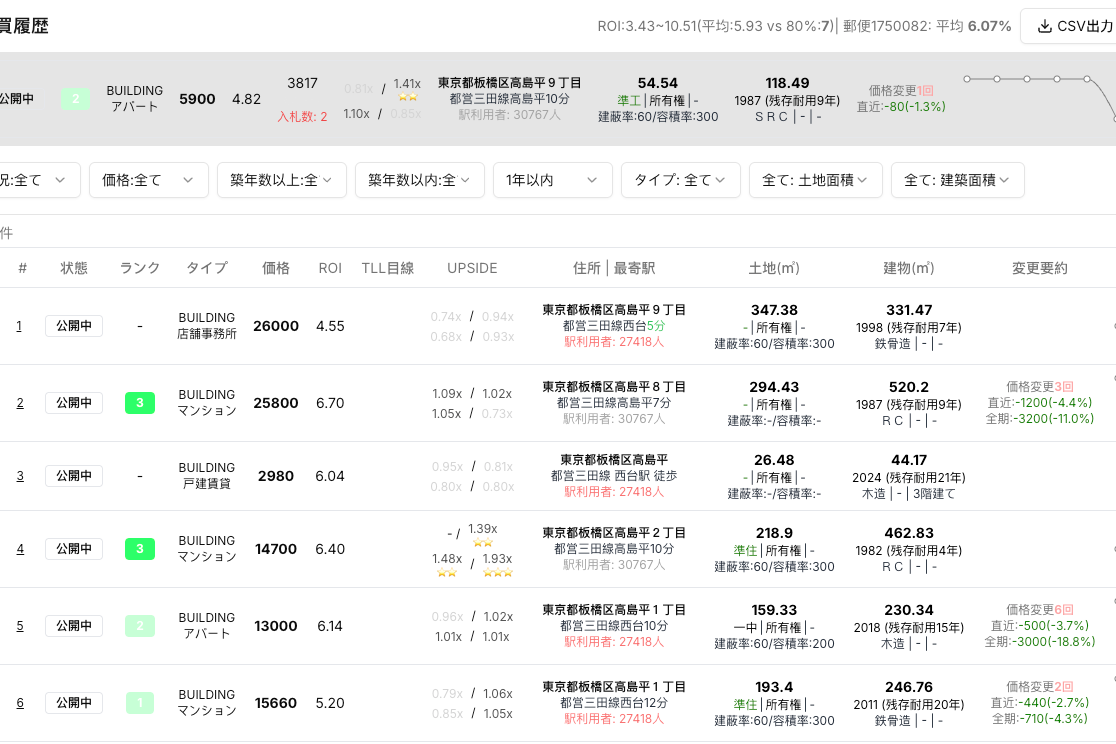
#3 Demographics, commuting and neighborhood appeal
Takashimadaira used to be densely populated but now faces population decline and serious aging. One redevelopment objective is to attract younger families back and restore community vitality. Transportation-wise, Takashimadaira is on the Toei Mita Line terminus, with roughly a 30-minute subway ride to central business districts like Otemachi—an acceptable commute. The area is also adjacent to major expressways and rail lines (with connections via Narimasu/Akabane), providing decent external connectivity. Compared with hubs like Akabane or Ikebukuro, Takashimadaira is more suburban and currently less attractive to young urban professionals. To boost soft amenities, Itabashi Ward and UR are partnering with universities and startups on smart-city and community-building pilots (for example, a "Dream Street" industry–academia collaboration). The ward also offers family-support policies such as local childcare platforms and children’s facility programs to enhance appeal to young families. Overall, Takashimadaira sits in northwest Tokyo with quiet, green surroundings; after renewal it may offer a combination of commuter accessibility and residential comfort that appeals to cost-conscious workers and young couples.
Comparison with neighboring investment returns
Compared with other areas within Itabashi and nearby Akabane and Ikebukuro, Takashimadaira’s historical gains have been lower but its upside potential is significant. Over the past decade Itabashi Ward’s average condo price rose about 45%, Kita Ward (including Akabane) about 45.2%, and Toshima Ward (Ikebukuro) about 53.2%. Takashimadaira’s 25.8% rise is less than half these averages, indicating prior opportunity cost for investors.
However, neighboring hotspots now trade at elevated prices with compressed rental yields and limited near-term upside. By contrast, Takashimadaira—supported by redevelopment-driven population and amenity upgrades—could catch up. For long-term investors, Takashimadaira is at a position similar to Jujo five years ago: a value gap that can be closed. For example, Akabane has recently added high-rise developments with average prices around 3.5M yen/tsubo and rental yields of 3–4%, implying slower future growth; Takashimadaira’s new developments may start around just over 3.0M yen/tsubo, offering higher value for money and potentially stronger mid-term returns versus mature neighboring districts. Takashimadaira is not directly comparable to a major subcenter like Ikebukuro, but versus other Itabashi neighborhoods (such as Oyama or Narimasu) and nearby suburban hubs (Akabane), its return prospects merit close attention.
Urbalytics’ investment-mapping shows more than 80 residential development projects of various scales around the redevelopment zone—more than any other district in Itabashi.
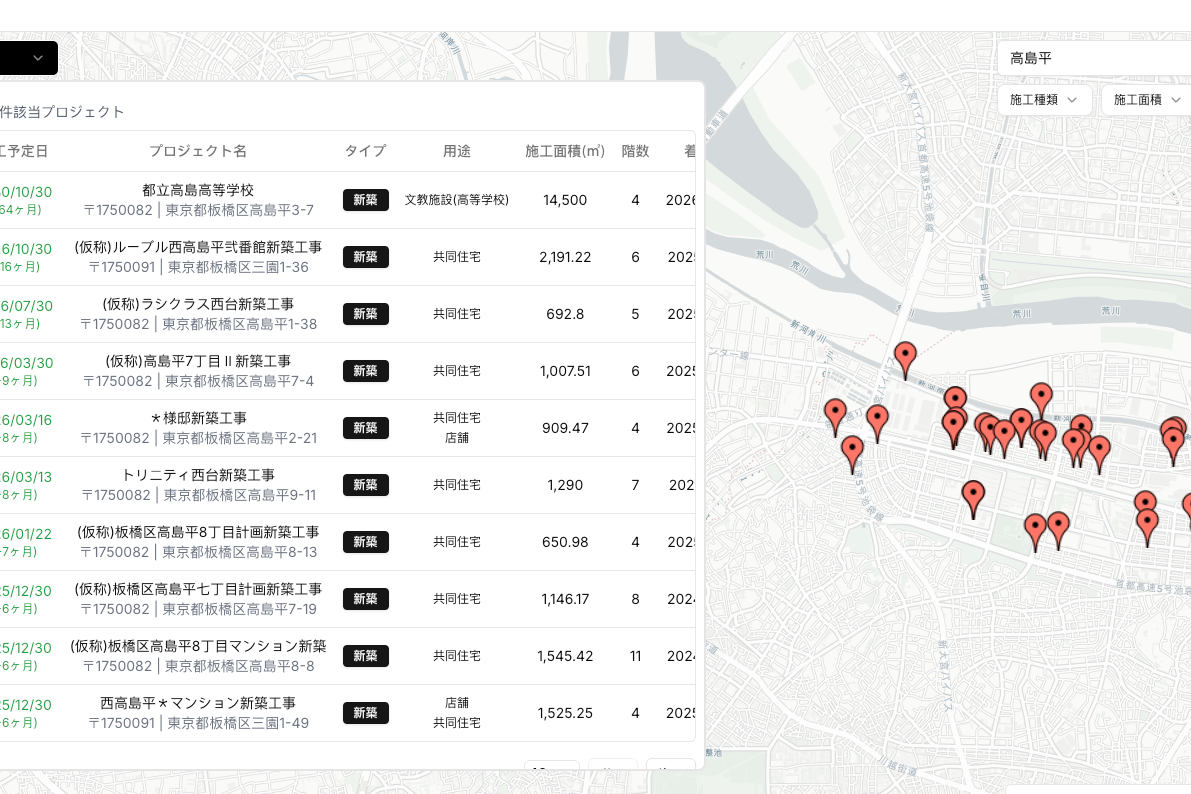
Conclusion: a value gap with both opportunities and risks
In summary, Takashimadaira’s redevelopment presents a mix of opportunity and risk.
Backed by a government-led long-term plan and UR’s involvement, the redevelopment outlook is relatively clear. Against a high and consolidating Tokyo market, Takashimadaira represents a value gap that could replicate Jujo-style value uplift. For patient long-term investors, entering Takashimadaira now—either by acquiring old properties ahead of demolition and remediation or by subscribing to new projects when launched—could be equivalent to boarding a 20-year appreciation trajectory. Attractive rental yields and policy incentives also lower holding costs and can serve as a stabilizer in a diversified portfolio.
That said, uncertainties remain. First, the project timeline is long (spanning roughly 20 years), and economic cycles, policy shifts or resident resistance could cause delays—investors must be prepared for extended holding periods and associated financing costs. Second, structural issues such as an aging resident base are not quickly resolved; if pricing for new units is set too high, absorption could be weaker than expected, dampening returns—early vacancy at Jujo’s commercial podium is a cautionary example. Finally, if Tokyo’s property market softens broadly, peripheral areas like Takashimadaira may be less resilient than core locations, posing market risk.
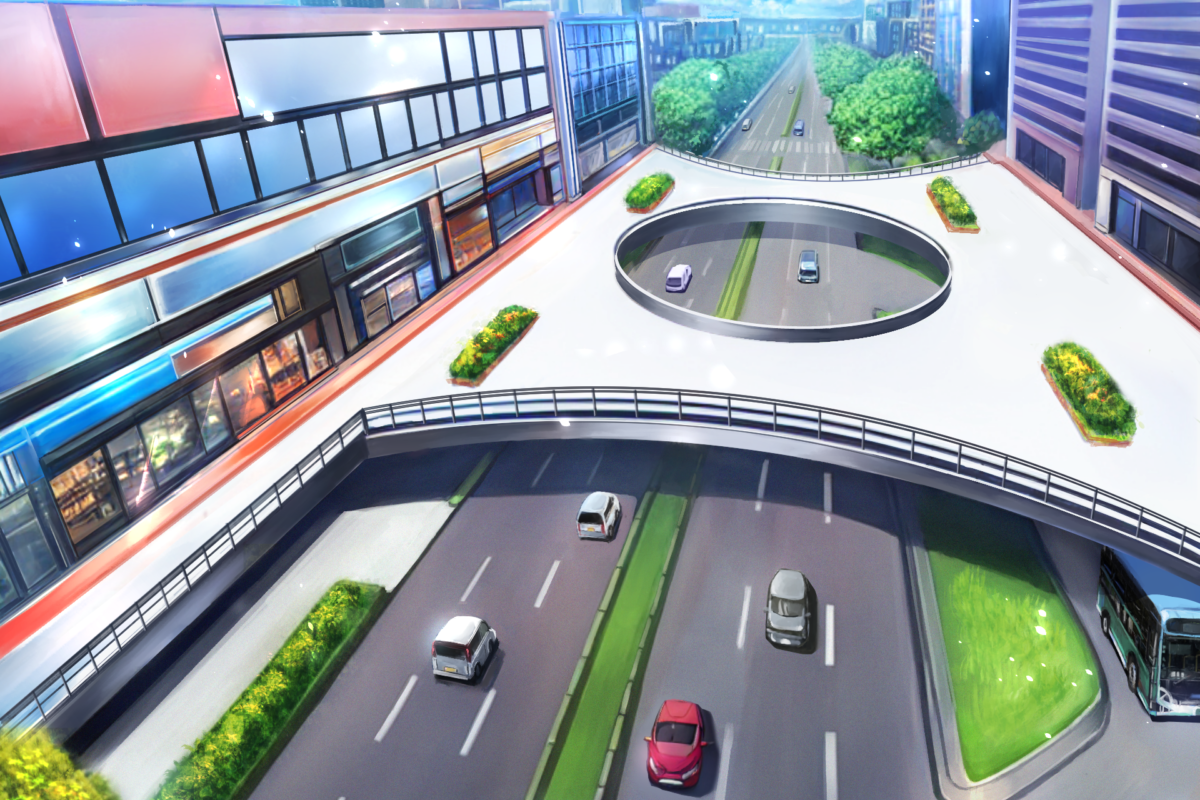
Overall assessment: Takashimadaira’s redevelopment appears to be an opportunity where rewards outweigh risks. The government’s firm commitment, a defined timetable and successful precedent projects support confidence. This once-mammoth estate stands at an inflection point, offering a rare long-term value-investment window to investors who are willing to research thoroughly and manage timing. For those prepared to take a long view, Takashimadaira presents a compelling, long-horizon investment case.
References
Takashimadaira Area Exchange Core Formation Urban Development Plan (Draft) — Itabashi Ward: https://www.city.itabashi.tokyo.jp/bousai/machidukuri/chiiki/1031335/1050143.html?utm_source=chatgpt.com
Asahi: "Takashimadaira — a tower for Japan’s ‘largest mammoth estate’ half a century after completion": https://www.asahi.com/articles/AST5X0SNQT5XOXIE006M.html?utm_source=chatgpt.com
Takashimadaira 2- and 3-chome Reorganization Area 1 (Takashimadaira estate tower plan): https://skyscrapers-and-urbandevelopment.com/page-256/page-41114/page-4584/page-52338/#:~:text=%E9%AB%98%E5%B3%B6%E5%B9%B3%E5%9B%A3%E5%9C%B0%E3%81%AF%E3%80%81%E5%9C%B0%E4%B8%8A5%EF%BD%9E14%E9%9A%8E%E3%80%81%E5%90%88%E8%A8%8864%E6%A3%9F%E3%80%81%E7%B7%8F%E6%88%B801%E4%B8%87170%E6%88%B8
Diamond Real Estate: "Takashimadaira Station (Tokyo) second-hand condo price trends +27.5% (10-year projection) — will the market surge?": https://diamond-fudosan.jp/ud/realestate_price_mansion_2024/url/%E9%AB%98%E5%B3%B6%E5%B9%B3%E9%A7%85%EF%BC%88%E6%9D%B1%E4%BA%AC%E9%83%BD%EF%BC%89#:~:text=%E9%AB%98%E5%B3%B6%E5%B9%B3%E9%A7%85%EF%BC%88%E6%9D%B1%E4%BA%AC%E9%83%BD%EF%BC%89%E3%81%AE%E4%BE%A1%E6%A0%BC%E3%81%AF%E9%81%8E%E5%8E%BB10%E5%B9%B4%E3%81%A7%2B25.8
Copyright: This article is original content by the author. Please do not reproduce, copy, or quote without permission. For usage requests, please contact the author or this site.
